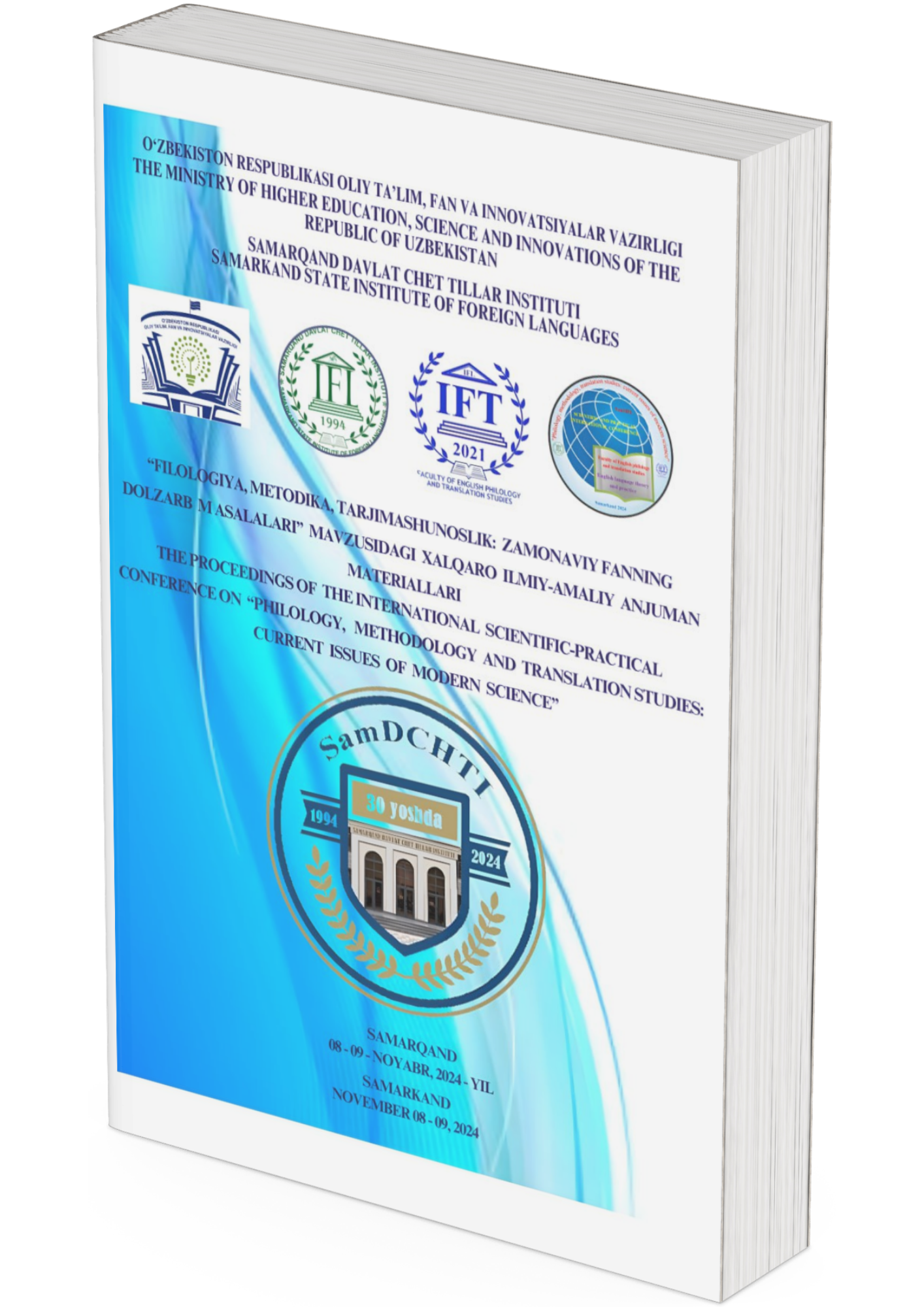Digital Literacy in Language Education: Preparing ESL Students for the Digital World
DOI:
https://doi.org/10.2024/w0pxf942Keywords:
digital literacy, ESL education, language learning, technology in education, 21st-century skills, digital skills, language acquisitionAbstract
As technology rapidly transforms communication and work environments, digital literacy has become a crucial skill for students worldwide. For English as a Second Language (ESL) learners, digital literacy not only enhances language acquisition but also prepares them for effective participation in a globalized, digital society. This article explores the importance of integrating digital literacy into ESL education, focusing on specific digital competencies that are essential for students. By examining effective instructional strategies, tools, and resources, this paper aims to provide educators with actionable insights into fostering digital literacy among ESL learners.
References
Ablakulovich, Abror Ernazarov, and Nasrullayeva Nafisa Zafarovna. "Theory of teaching english vocabulary." In Proceedings of International Conference on Modern Science and Scientific Studies, vol. 2, no. 4, pp. 11-15. 2023.
Akbaraliyevich L. A. Peculiarities of teaching foreign language to grown-ups //modern views and research. – 2020. – С. 171.
Akhtamovna, Mamatkulova Kholida. "Expression of ethnocultural concepts in japanese philosophy and artistic text." Spectrum Journal of Innovation, Reforms and Development 5 (2022): 6-9.
Bawden, D. (2008). Digital Literacy. Library & Information Sciences, 31(3), 567-584.
Benson, P. (2011). Teaching and Researching Autonomy in Language Learning. Routledge.
Buckingham, D. (2007). Beyond Technology: Children’s Learning in the Age of Digital Culture. Polity.
Chapelle, C., & Jamieson, J. (2008). Tips for Teaching with call: Practical Approaches to Computer-Assisted Language Learning. Pearson.
Eshet-Alkalai, Y. (2004). Digital Literacy: A Conceptual Framework for Survival Skills in the Digital Era. Journal of Educational Multimedia and Hypermedia, 13(1), 93-106.
Godwin-Jones, R. (2011). Emerging Technologies. Digital Literacies. Language Learning & Technology, 15(3), 2-8.
Greenhow, C. (2011). Youth, Learning, and Social Media. Educational Researcher, 40(4), 287-294.
Humorous phraseologisms - as a tool offunny assessment of real events (in French material) Shahobiddin Ashurov and Nigorabonu Suvonova BIO Web Conf., 65 (2023) 10024 DOI: https://doi.org/10.1051/bioconf/20236510024
Jenkins, H., Purushotma, R., Clinton, K., Weigel, M., & Robison, A. J. (2006). Confronting the Challenges of Participatory Culture: Media Education for the 21st Century. MIT Press.
Kern, R. (2006). Perspectives on Technology in Learning and Teaching Languages. TESOL Quarterly, 40(1), 183-210.
Lankshear, C., & Knobel, M. (2008). Digital Literacies: Concepts, Policies and Practices. Peter Lang.
Leu, D. J., Forzani, E., & Timbrell, N. (2013). The New Literacies of Online Research and Comprehension: Rethinking the Reading Achievement Gap. Educational Researcher, 42(6), 352-358.
Livingstone, S. (2004). Media Literacy and the Challenge of New Information and Communication Technologies. Communication Review, 7(1), 3-14.
Nasrullaeva, N. (2024, October). Gender aspect in phraseology. In Conference Proceedings: Fostering Your Research Spirit (pp. 324-327).
Ng, W. (2012). Can We Teach Digital Natives Digital Literacy? Computers & Education, 59(3), 1065-1078.
Respublikasi, O‘zbekiston. "Interpretation of national concepts in the works of abdulla qodiriy and navarre scott momaday sattorov ozod bobirovich." toshkent davlat sharqshunoslik universiteti (2024): 590.
Ribble, M. (2015). Digital Citizenship in Schools: Nine Elements All Students Should Know. International Society for Technology in Education.
Sattorov, Ozod Bobirovich. “Paremioogik birliklarda variantlanish hodisasi”. Innovation: The Journal of Social Science and Researchers, vol. 1, no. 8, 2023, pp. 10-14. https://doi.org/10.5281/zenodo.7847813.
Sattorova, Gulmira. "Features fantasy Kenzaburo Oe." Результаты научных исследований в условиях пандемии (COVID-19) 1.03 (2020): 57-60.
Shermatov A. some features of implicature in english and uzbek literary texts.
Shifman L. Memes in Digital Culture. - Cambridge: MIT Press, 2014. - p. 50.
Thorne, S. L., & Payne, J. S. (2005). Evolutionary Trajectories, Internet-Mediated Expression, and Language Education. CALICO Journal, 22(3), 371-397.
Tuychiyeva Navbahor Ruzimurot kizi, & Latipov Aziz Akbaraliyevich. (2023). The relationship of phase with components of aspectuality. Новости образования: исследование в XXI веке, 1(10), 333–337.
Warschauer, M. (2006). Laptops and Literacy: Learning in the Wireless Classroom. Teachers College Press.
Zafarovna, Nasrullayeva Nafisa. "Family. concept, types, structure, problems." ijtimoiy fanlarda innovasiya onlayn ilmiy jurnali 3.4 (2023): 160-163.
Ашуров Ш. Лексические особенности английских эквивалентов узбекских пословиц, передающих национальные ценности //Зарубежная лингвистика и лингводидактика. – 2023. – Т. 1. – №. 1. – С. 1-10.
Ашуров Ш., Мирзакулова М. Концепт «любовь» в пословичной картине мира в английском и узбекском языках //Общество и инновации. – 2021. – Т. 2. – №. 4/S. – С. 78-83.
Ашуров, Шахобиддин Саидович. "К проблеме типологии субстанциальных синтаксем (на примере английского и узбекского языков)." Ученый XXI века 2-5 (2016).
Насруллаева, Нафиса Зафаровна. "Национально-культурная специфика английских фразеологизмов с именами собственными." ББК 74.48 Р76 (2019): 208.
Насруллаева, Нафиса Зафаровна. "Функционирование английских гендерно маркированных фразеологизмов в художественной литературе." Бюллетень науки и практики 6 (19) (2017): 342-348.
Озокова Ч. А., Шерматов А. А. К вопросу истории теории женской литературы (на примере современной узбекской прозы) //Современное общество: актуальные проблемы и перспективы развития в социокультурном пространстве. – 2019. – С. 167-169.
Downloads
Published
Conference Proceedings Volume
Section
License
Copyright (c) 2024 Sitora Gʻaniyeva, Ozod Sattorov (Author)

This work is licensed under a Creative Commons Attribution 4.0 International License.









